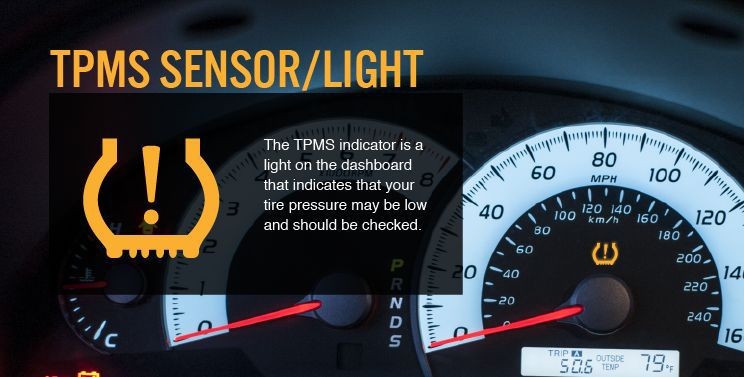The Tire Pressure Monitoring Sensor (TPMS) is a crucial safety feature in modern vehicles. It alerts drivers when one or more tires are significantly underinflated, a condition that can lead to dangerous driving situations. The TPMS warning light, a yellow symbol resembling a horseshoe with an exclamation point, illuminates on the dashboard when low tire pressure is detected. This seemingly simple light represents a significant advancement in automotive safety, born from a history of tire-related accidents.
 TPMS Symbol Image
TPMS Symbol Image
Before the widespread adoption of TPMS, drivers relied on manual tire pressure gauges to check for underinflation. This process was inconvenient and often neglected, leading to a higher incidence of accidents caused by low tire pressure. In response, the U.S. government mandated TPMS technology in most vehicles sold since 2007 through the Transportation Recall Enhancement, Accountability, and Documentation (TREAD) Act. While TPMS technology helps, regular tire maintenance remains essential.
Two Types of Tire Pressure Monitoring Sensors: Indirect and Direct
There are two primary types of tire pressure monitoring systems: indirect and direct. Both systems activate the same dashboard warning light, but they employ different methods to detect low tire pressure.
Indirect TPMS: Monitoring Tire Pressure Through Wheel Speed
Indirect TPMS utilizes the wheel speed sensors already in place for the anti-lock braking system (ABS). These sensors measure the rotational speed of each tire. By comparing these speeds and analyzing other vehicle data, the on-board computer can estimate tire size. If a tire rotates faster than expected for its size, the system infers underinflation and triggers the TPMS warning light.
Advantages of Indirect TPMS:
- Lower cost compared to direct TPMS
- Reduced maintenance and programming requirements
Disadvantages of Indirect TPMS:
- Potential inaccuracies with varying tire sizes or uneven wear
- Requires resetting after tire inflation or rotation
Direct TPMS: Measuring Pressure with In-Tire Sensors
Direct TPMS employs pressure sensors located within each tire. These sensors directly measure tire pressure and often temperature as well. This data is transmitted wirelessly to a central control module, which analyzes the information and activates the warning light if pressure falls below a predetermined threshold. Each sensor has a unique serial number, allowing the system to monitor individual tires.
Advantages of Direct TPMS:
- Provides precise tire pressure readings
- Unaffected by tire rotations or replacements
- Long-lasting sensor batteries (typically around 10 years)
Disadvantages of Direct TPMS:
- Higher cost than indirect TPMS
- Specialized tools may be required for sensor replacement or synchronization
- Sensor damage possible during tire mounting/demounting
Tire Pressure Monitoring Sensor: Essential for Safety
Both indirect and direct TPMS play a vital role in enhancing driving safety by alerting drivers to potentially dangerous low tire pressure situations. While TPMS provides a valuable safety net, it should not replace regular manual tire pressure checks using a reliable gauge. Consider the tire pressure monitoring sensor as one component of a comprehensive tire maintenance routine. Regular maintenance ensures optimal tire performance, fuel efficiency, and safety.

